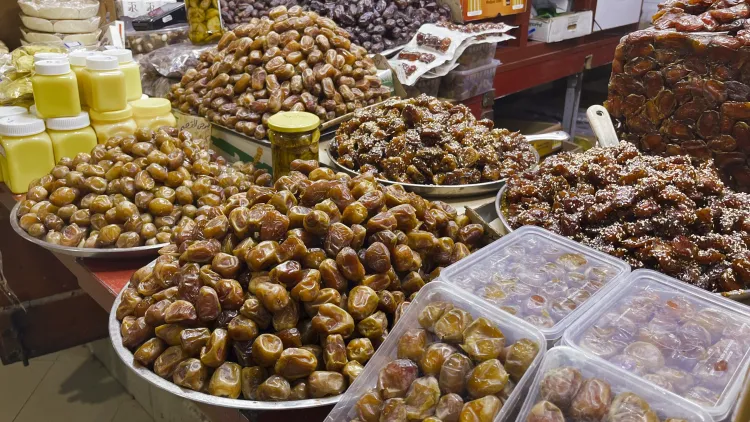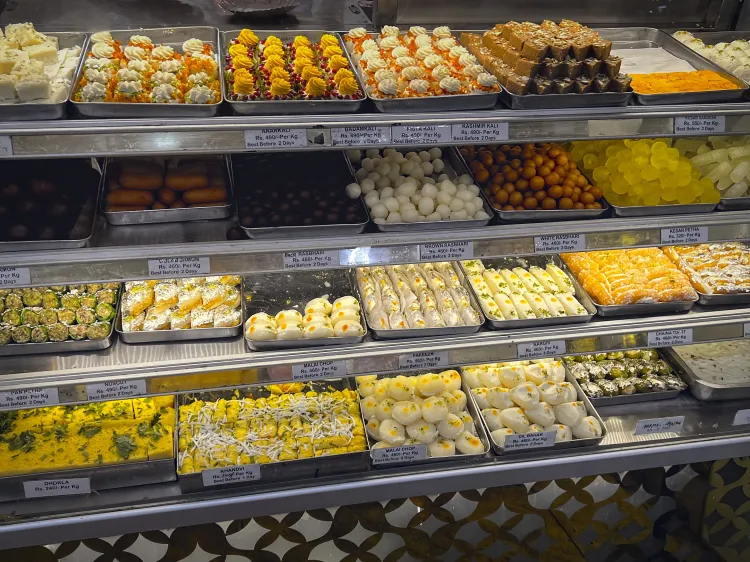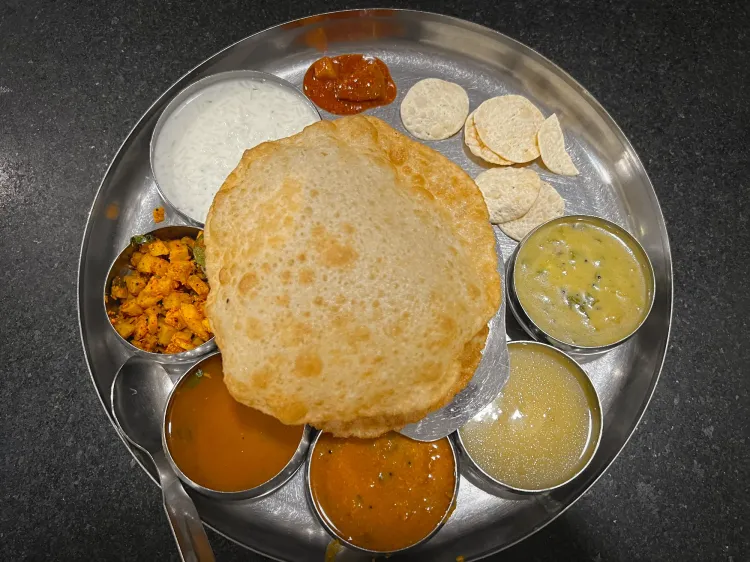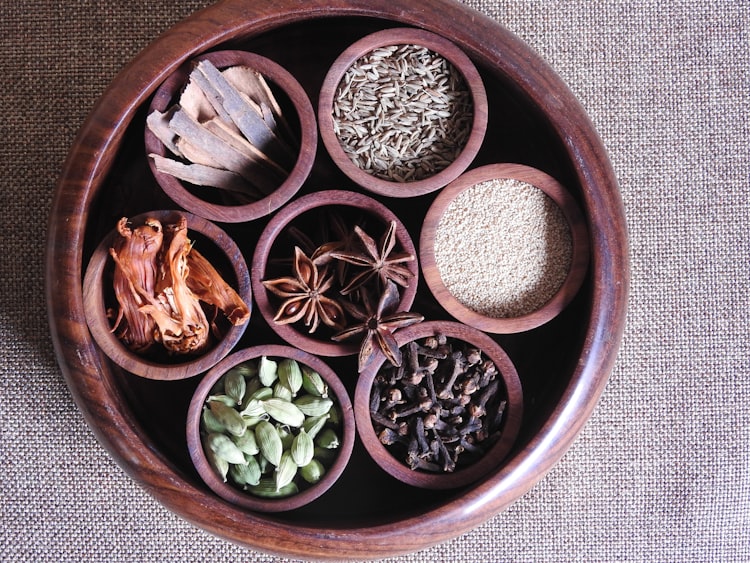Cambodian Gastronomy
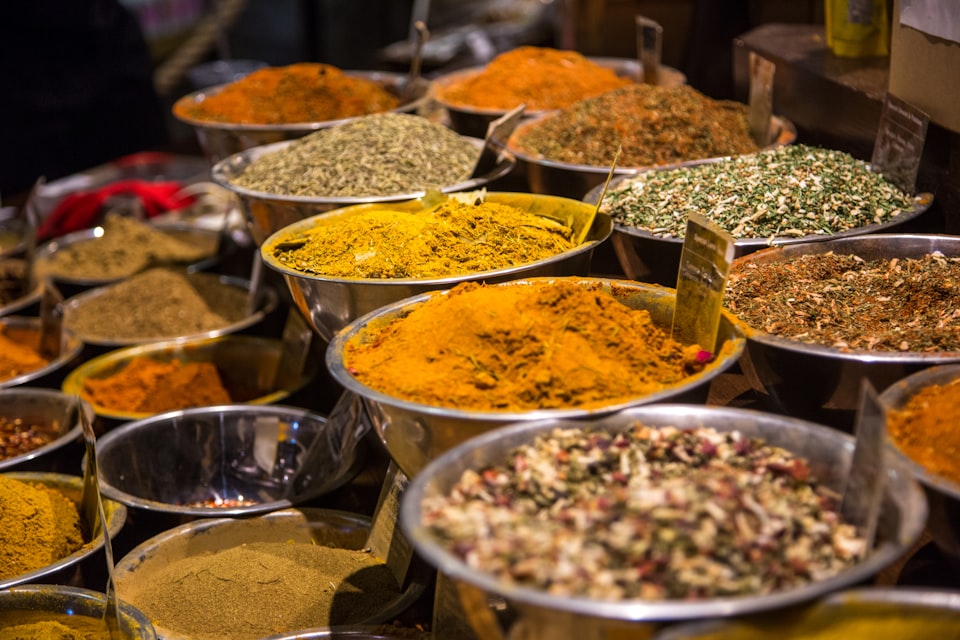
Cambodian cuisine is inspired by an incredible melting pot of past influences. The flavors of Indian traders, Chinese migrants, the great Khmer Empire's royal cuisine, Vietnamese conquerors, and French colonists come together to shape this complex, diverse cuisine. Although not quite as well-known as neighboring Thai or Vietnamese cuisines, Cambodia has its own distinct flavors and dishes that can stand up to the best curries from Thailand or soups/noodles from Vietnam. Cambodia is a strong nation, in recovery, with incredible culture and gastronomy that should not be slept on.
History
Cambodia traces its roots to the mighty Khmer empire, which ruled an area encompassing Laos, large areas of Thailand, parts of modern-day Vietnam, and what is now Cambodia from the 9th until approximately the 15th century. Before this, the area was ruled by regional Hindu kingdoms called Funan then Zhenla in Chinese annals. During this period, Cambodia was influenced by Indian and Chinese traders. It is also clear from Khmer artifacts that there was a large ethnically Chinese population living and thriving in the Khmer empire during its reign. The Khmer empire had many struggles with the Champa/Vietnamese to the east and the Thai/Siamese peoples to the west. Finally succumbing to Thailand, Cambodia entered a period of decline and almost annihilation by its neighbors, which was stopped short by the French colonization of the region. Afterward, the country finally gained its independence in 1953 in what is now modern-day Cambodia. This history of Cambodia produces a cuisine with Indian spices, Chinese noodles and style, with Vietnamese and French influences.
A final tragic piece of history that effects Cambodian gastronomy was the brief but violent period of Pol Pot / the Communist Party of Kampuchea (CPK), also known as the Khmer Rouge. Unfortunately, due to atrocities committed during the Khmer Rouge regime from 1975-1979 large portions of Cambodian cuisine were lost. In just four years centuries of culture were destroyed. Thankfully, many Cambodians are working to revive the lost knowledge and revitalize the phenomenal dishes of the past.
Ingredients
The three main components of Cambodian cuisine are its premier spice blend (kroeung), fermented fish paste (prahok), and coconut milk. Almost every dish you will see below combines kroeung, prahok, and coconut milk in different ways to create entirely new dishes. Like much of Southeast Asia, rice is a dietary staple and is eaten at every meal. Palm sugar (khaw) and a wide variety of herbs are also extremely common in most Cambodian dishes. Chilis are used sparingly and as side condiments, making Cambodian food notably less spicy than its Thai or Laotian neighbors.
Major Ingredients
Kroeung
Prahok
Coconut Milk
Palm Sugar
Rice / Rice Noodles
In addition to prahok, Cambodia has two other fermented sauces used throughout the cuisine. Mam is a sweet-flavored fermented sauce that originates from the Kampuchea Krom area. It is a term for seafood fermented with roasted red sticky rice and palm sugar. Kapi is a fermented salty sauce mixed with garlic that is used as a dipping sauce for grilled meat.
Aromatics consist of shallots, garlic, galangal, ginger, lemongrass, star anise, turmeric, cinnamon, cloves, cardamom, mint, sweet basil, kaffir lime, cilantro, tamarind, and Kampot pepper. Kampot pepper is one of the few Asian-grown ingredients that has received protected Geographical Indication (GI) status. These aromatics are particularly important because, when they are proportioned correctly, they form the premier spice blend that appears in almost all Cambodian dishes, kroeung. This famous spice blend combines lemongrass, turmeric, cardamom, cloves, star anise, ginger, galangal, garlic, and kaffir lime leaves to create the characteristic Cambodian flavor profile.
All sorts of protein sources, from beef/pork to insects, are used in Cambodian cooking, although it is primarily a seafood cuisine. From the freshwater fish in the Mekong to the crustaceans in the Gulf of Thailand, Cambodians make great use of seafood in all aspects of their cuisine.
Tropical fruits abound in Cambodia: coconut, durian, jackfruit, dragonfruit, mangosteen, mangoes, bananas, and lychees. Finally, starches outside of rice in the cuisine came from either a Chinese or French influence. From China: dumplings, steamed buns, noodles, and rice porridge (babor / bor bor). From France: bread/baguettes and pastries.
International Highlights
Amok (Coconut fish curry)
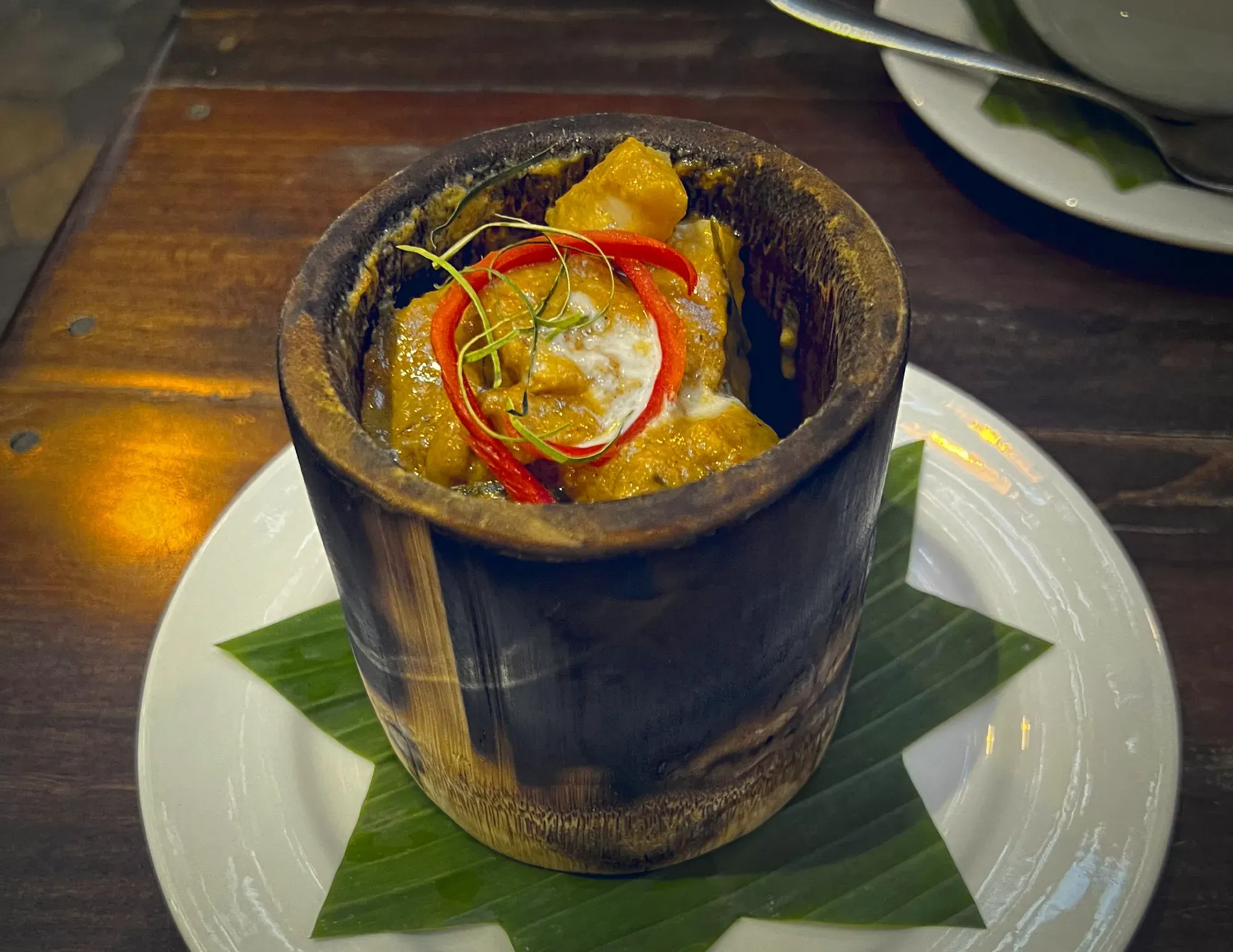
Cambodia's most famous dish is Amok. Amok is a coconut fish curry that is symbolic of Cambodian cuisine. The fish, kroeung curry paste, and coconut cream are steamed into a custard consistency and served in a banana leaf. The flaky white fish, slightly sweet nodes in the curry, and flavors of lemongrass/turmeric/kaffir lime blend perfectly to create this delicious dish.
Samlor Korkor (Sam Lor Kor Kor)
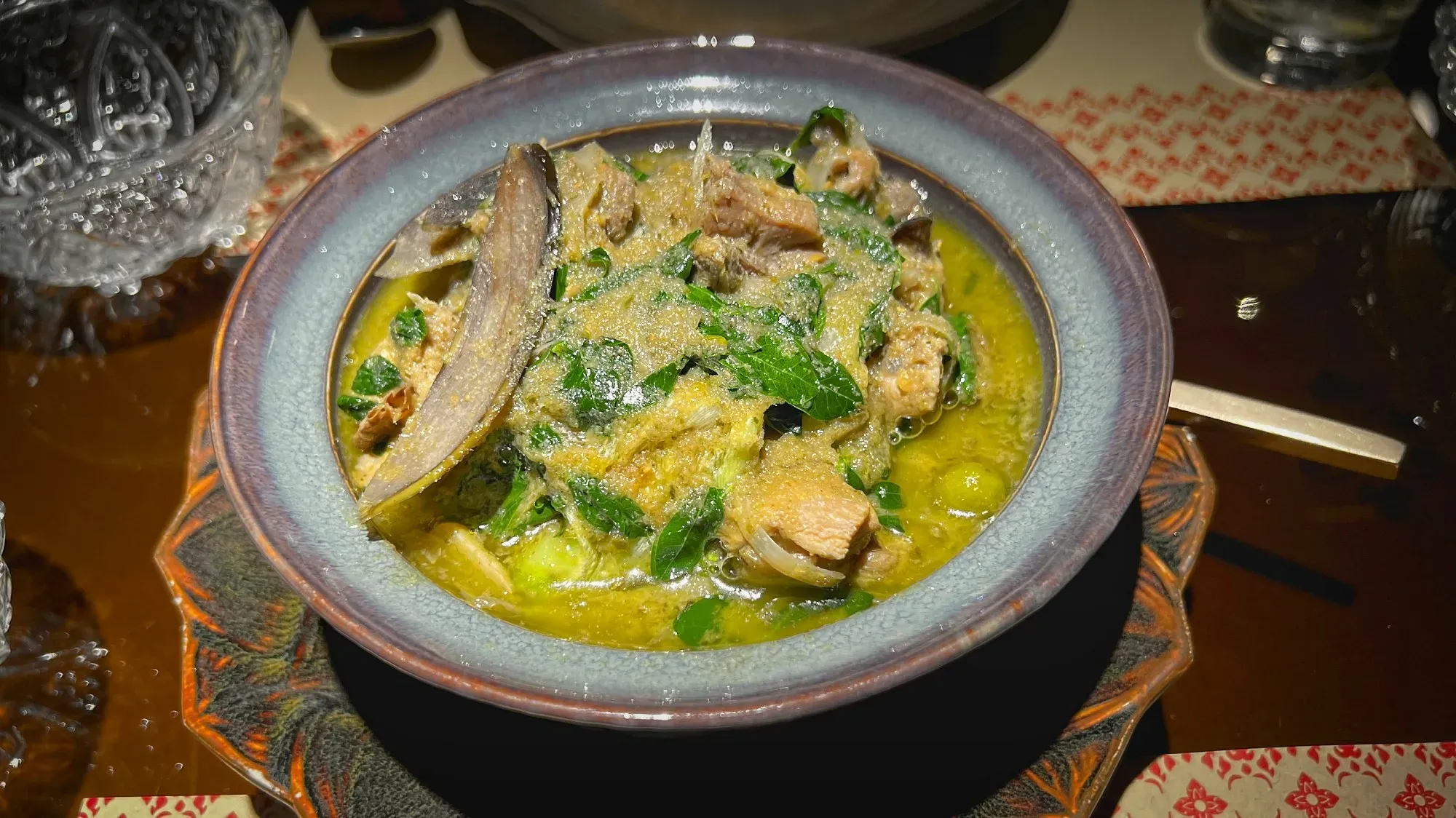
Often considered another one of Cambodia's national dishes, Sam Lor Kor Kor is a prahok and kroeung flavored soup filled with native vegetables and meat. The dish is similar to Laotian Or Lam with Cambodian flavor profiles. The kroeung, prahok, and some fish sauce are used as a base to create a soup in which pumpkin, eggplants / Khmer eggplants, green grated papaya, yardlong beans, and meat, most commonly chicken, are cooked. It can be eaten alone, or with plain white rice.
Nom Banh Chok (AKA- "Khmer noodles")
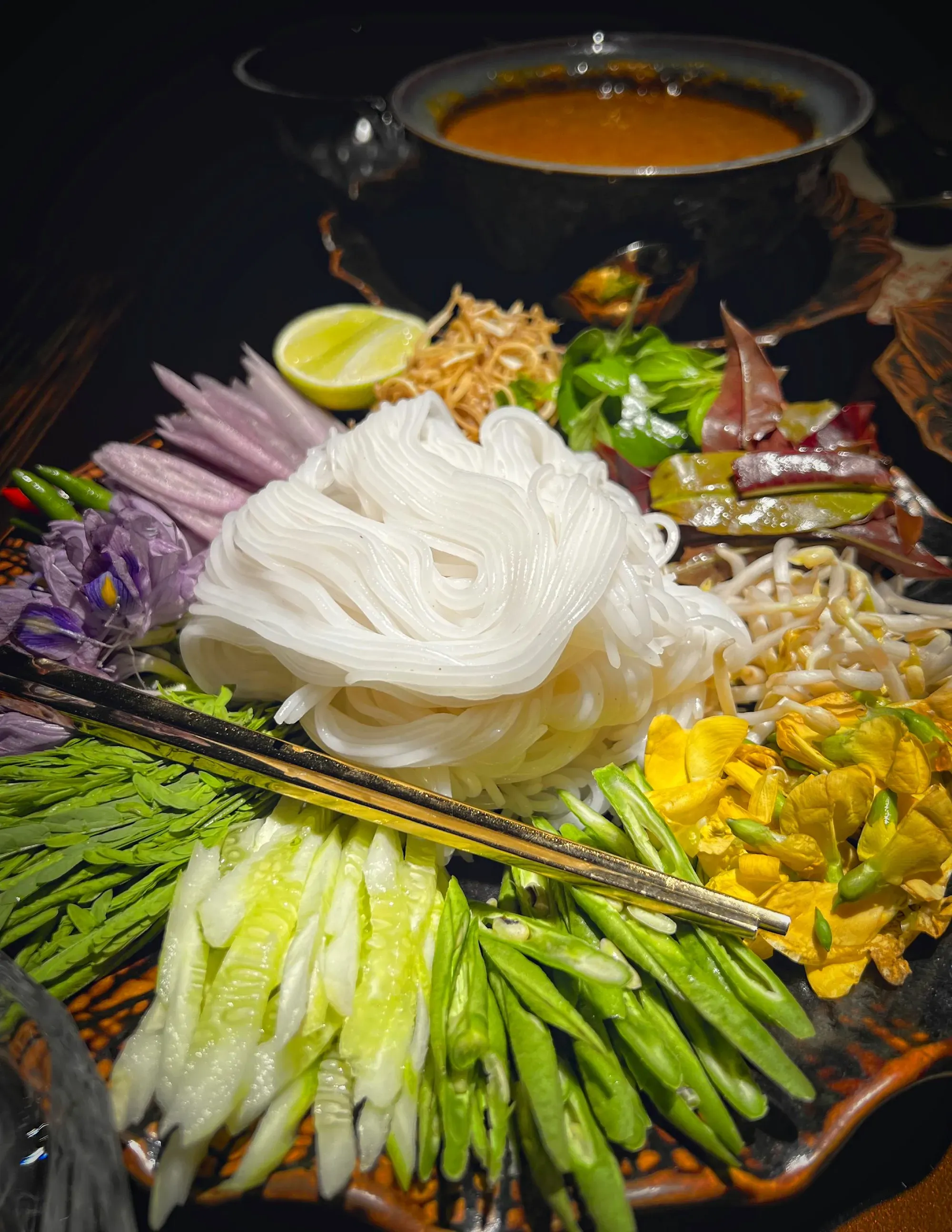
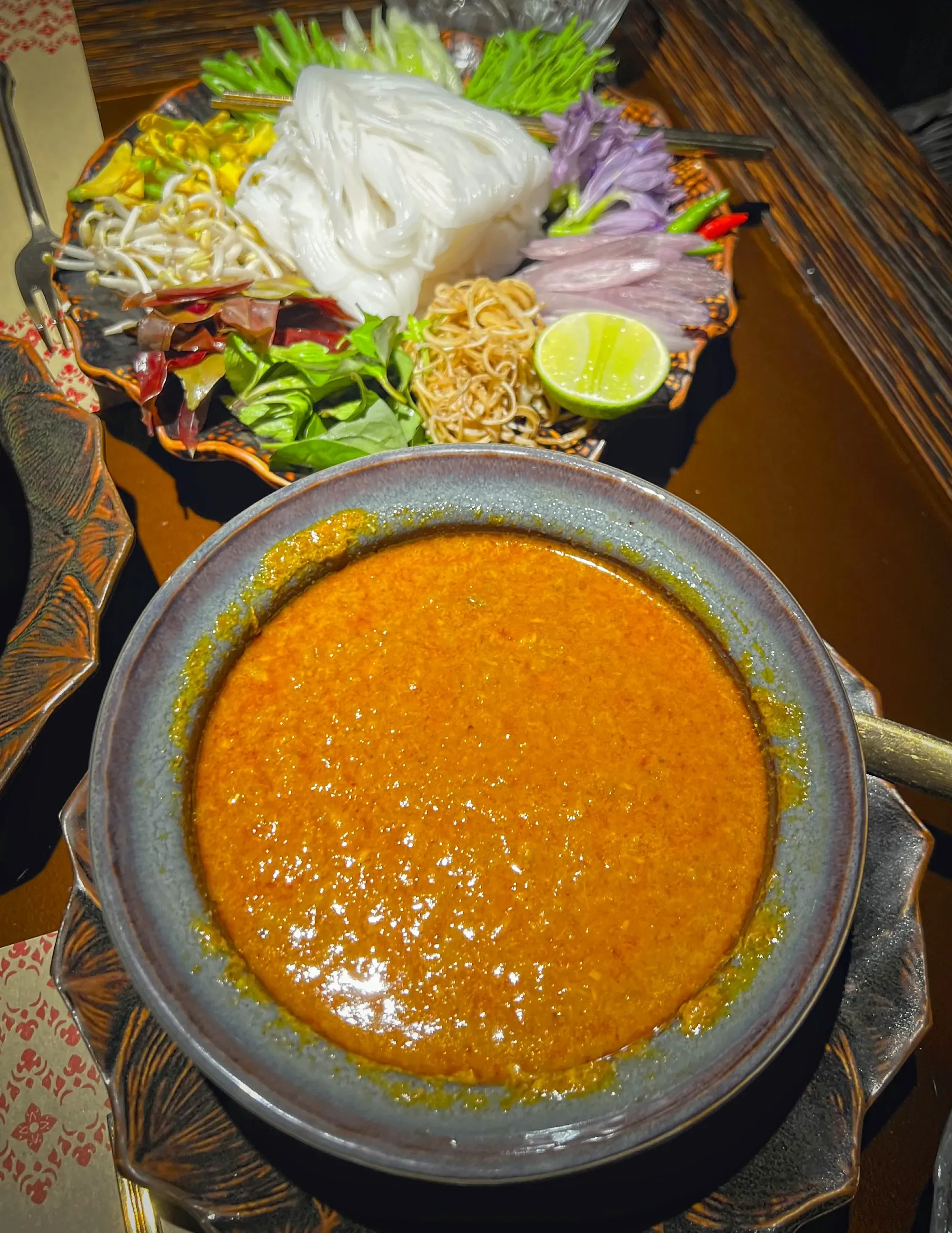
Nom Banh Chok (spelled in many different variations) is the name of the noodle and now the dish, which is so popular in Cambodia that the meal is often just referred to as "Khmer Noodles". A fun story to look up is the Khmer legend Thun Chey, which the Cambodians tell as an anecdote on how/where the Chinese actually got the idea for noodles (implying the credit for noodles should truly be a Cambodian legacy, not a Chinese).
Nom Banh Chok now consists of these rice noodles served under a curry broth with a festival of garnishes to round out your bowl. The garnishes in this noodle dish can be quite extravagant, and make for a beautiful presentation; traditional garnishes will include local flowers and in-season herbs: wing beans, banana flowers, or water lily stems are popular choices. The curry broth comes in many different varieties and is highly region-specific. Two popular choices are a green/yellow kroeung-based version of leaves and lemongrass, and the Num Banh Chok Nam Ya, a red fish curry version that is classically served at ceremonial occasions.
Lok Lak
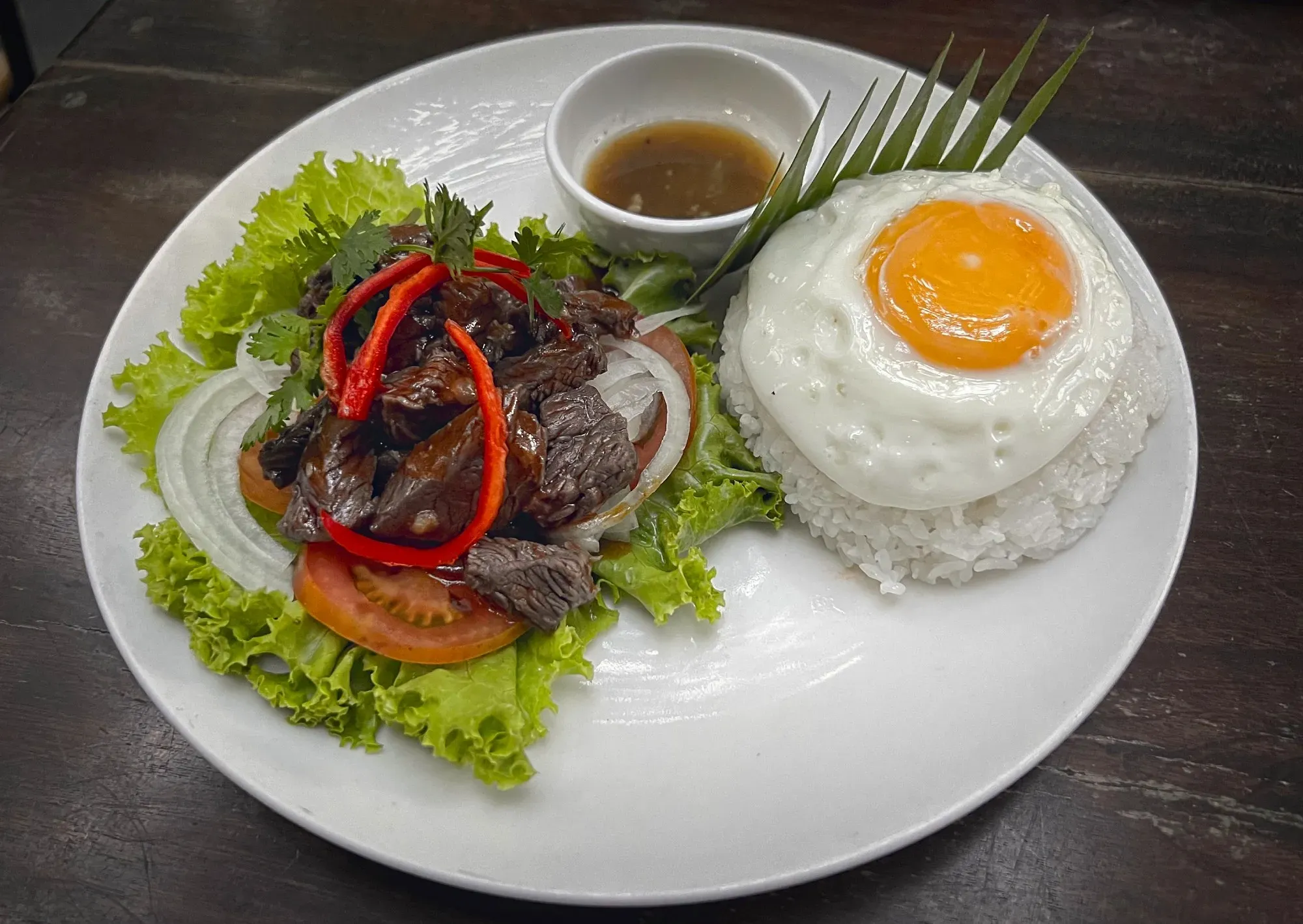
Lok Lak (or Loc Lac) is a "Cambodian" stir fry dish that has translated well on the international stage. Cambodian is in quotes because it is up for debate whether this dish is originally Vietnamese or Cambodian. It definitely came about due to the French colonial period in either country, but many argue that Vietnamese shaking beef, or bò lúc lắc, was the original version of this dish. Perhaps because Vietnamese cuisine has so many other heavy hitters, this dish has a larger role in Cambodian gastronomy and so we are going to give the dish's credit to Cambodia for the purposes of our gastronomy review.
Beef is cut into pieces, marinated in a tomato/fish paste mixture, then sautéed. The beef is placed on a bed of lettuce and tomatoes and then served with a side of rice and fried egg. The lettuce leaves can be used as a wrapping for the rest of the ingredients in order to group the ingredients and dip them into a lime and pepper dipping sauce that typically accompanies the dish.
Regional-Specific Shoutouts
Prahok
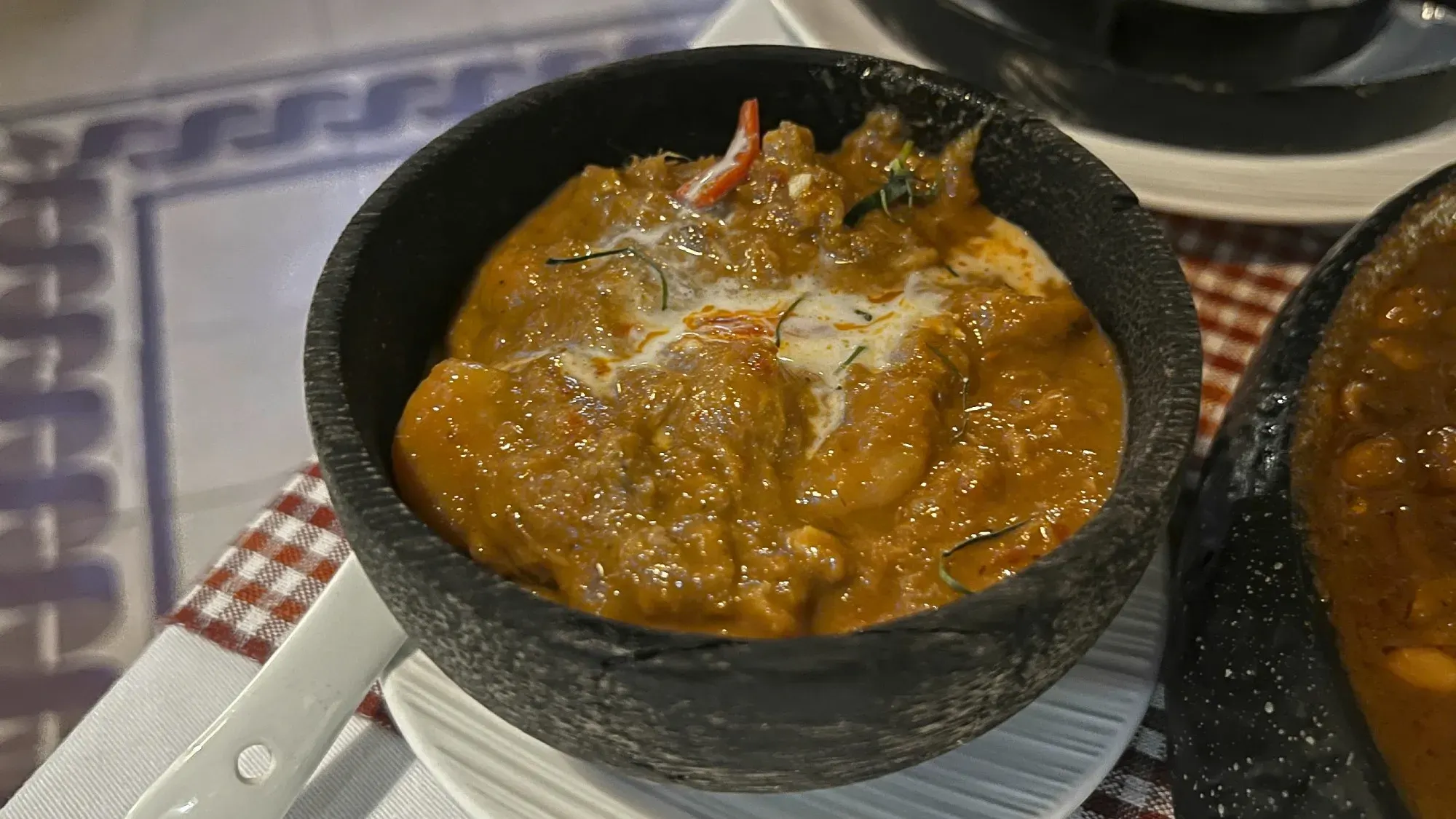
As discussed above, Prahok is one of the main characteristic ingredients of Cambodian food. It can also be used as the name of dishes. By combining the namesake paste with spices like kroeung and coconut milk, Cambodians can create a whole slew of dishes with vegetables, fish, and meats.
Nhoam krauch thlong (Pomelo salad)
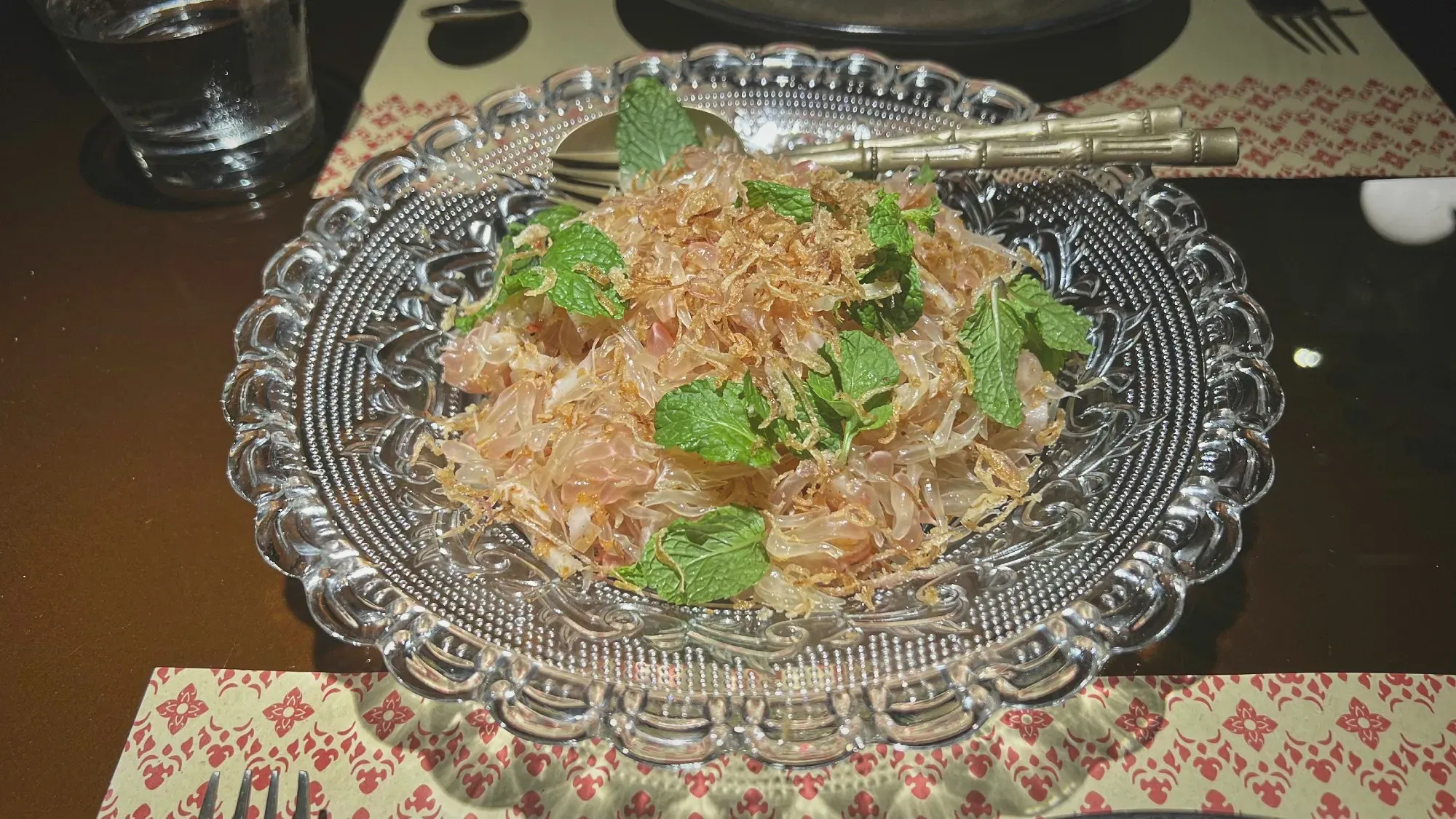
A traditional salad dish featuring pomelo fruit. The salad consists of a mixture of little bits of peanuts, coconut, shallots, and herbs, along with the pomelo flesh. Classically it was served with small slices of boiled pork, but today it has become popular to use prawns instead.
Kuy Teav
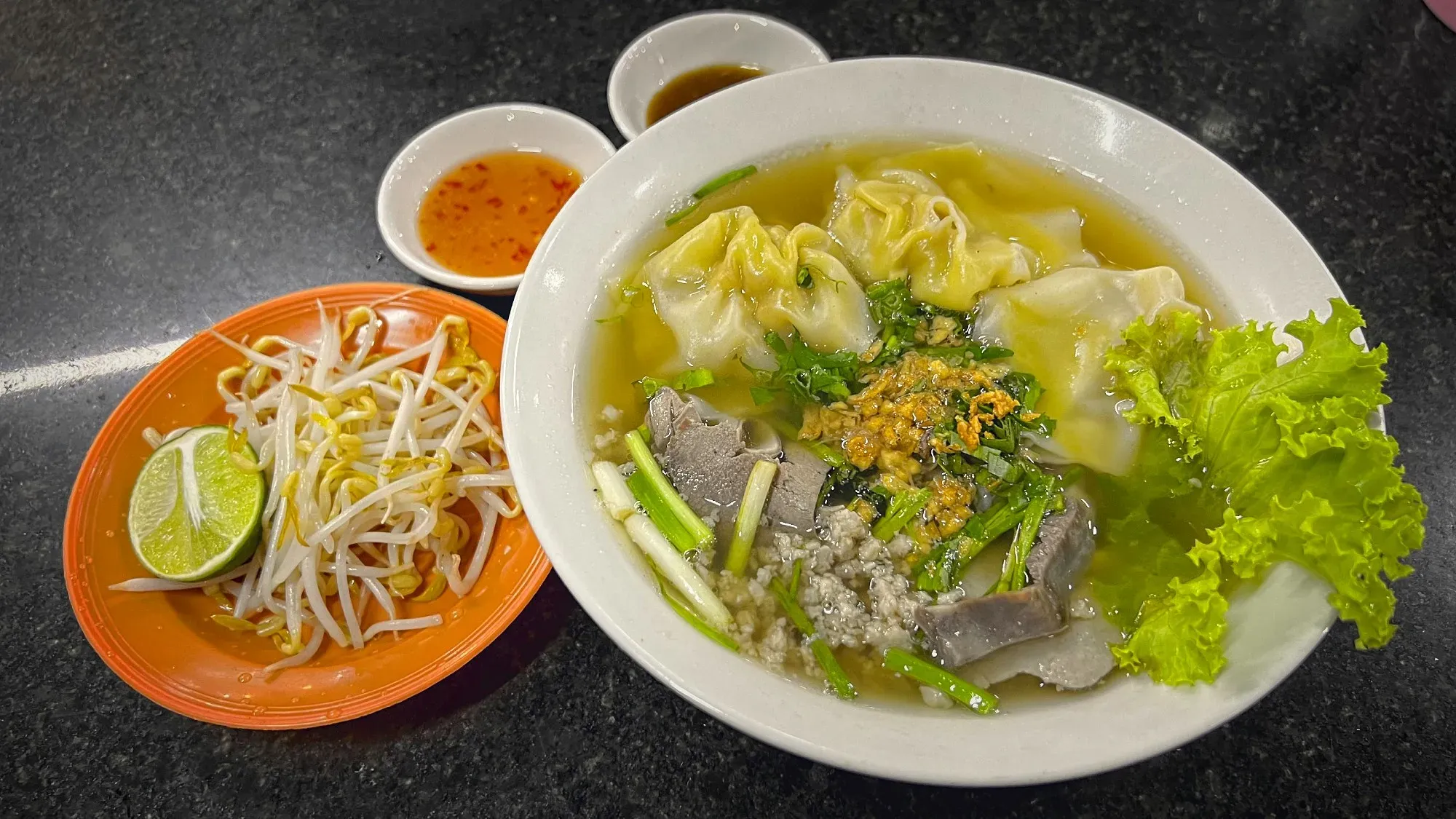
A rice noodle soup cooked in pork bone stock with a variety of toppings (garlic, limes, pepper, etc.) and served with bean sprouts, additional lime, and fresh herbs. The soup most likely arose from Chinese-Cambodian immigrants and is often eaten for breakfast. Restaurants will often cook a large pot of the stock in the morning with the pork bones and then add additional meats and centerpieces to the stock to create a huge variety of kuy teav options for customers.
Kdam Chha Mrich Kchei (Kampot Pepper Crab)
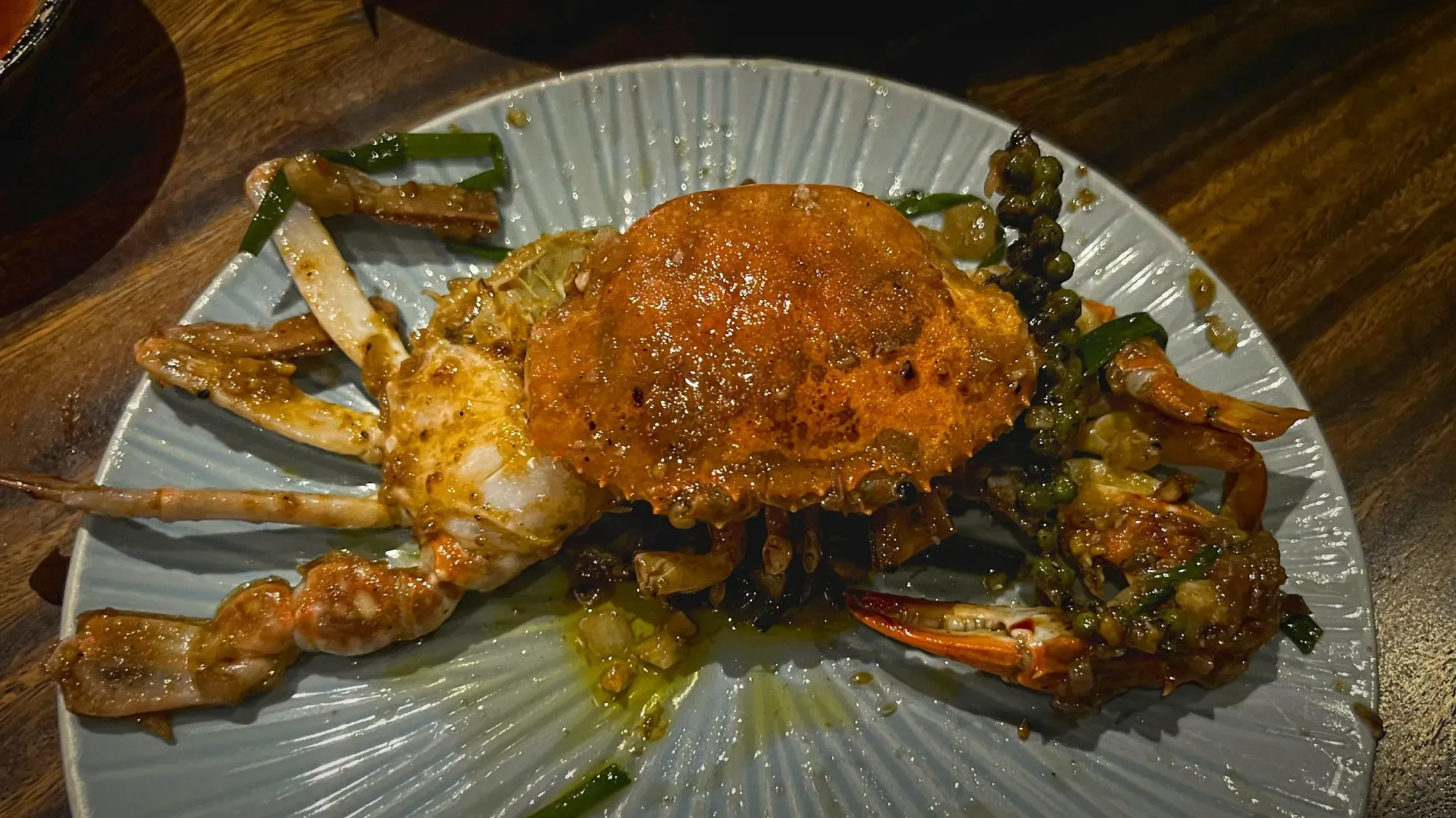
A specialty from the Kep province off the Gulf of Thailand. This dish features a freshly caught crab sautéed with garlic and green Kampot peppercorn. Green Kampot pepper is a certified geographical indication (GI) product, meaning it can only be grown in a particular area of the world: Cambodia. It is a unique ingredient and the dish is simply a fantastic use of a local ingredient with fresh seafood.
Kari [Samlar] Sach Moan
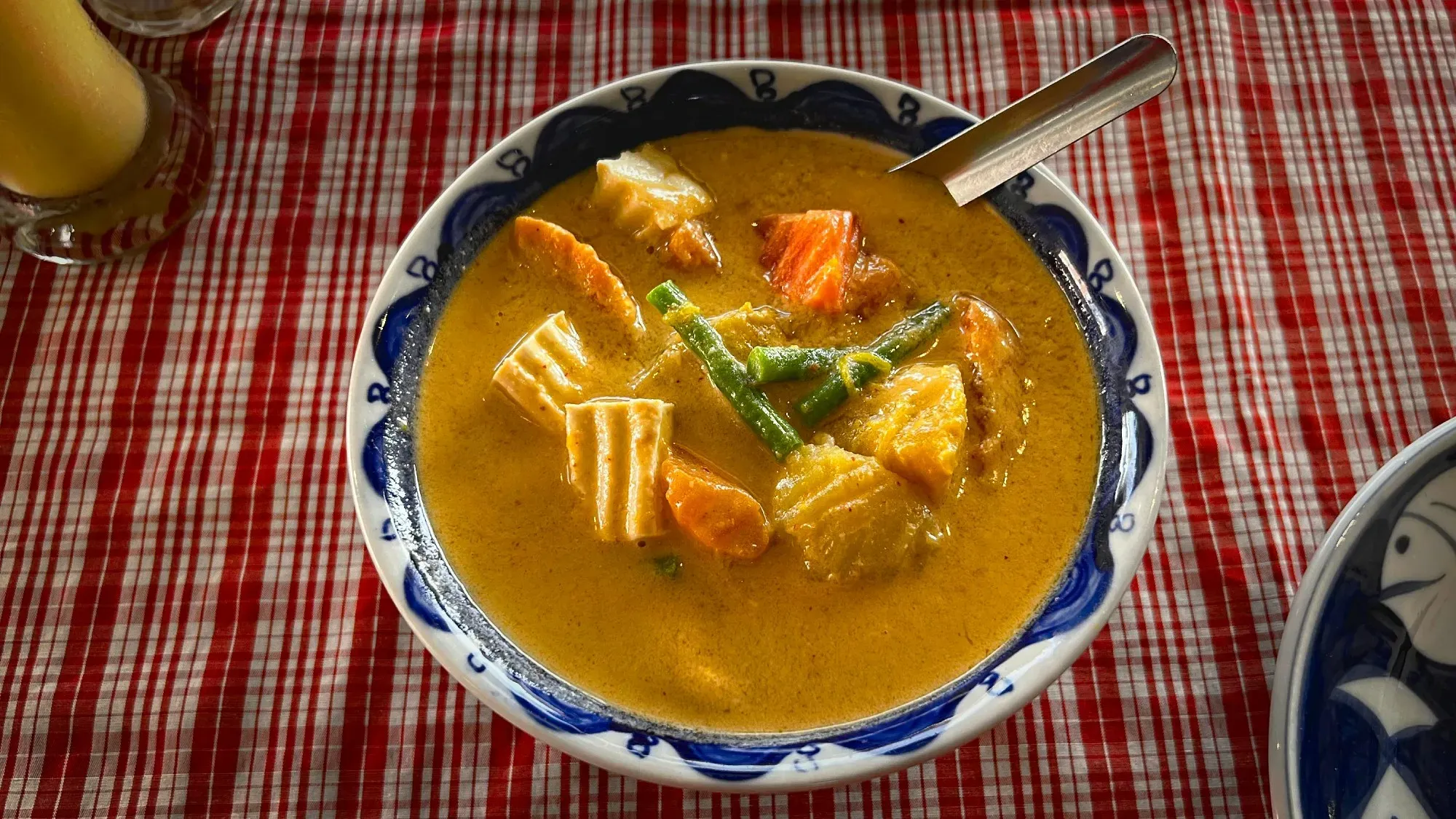
A chicken curry dish that is made by combining coconut milk, shrimp paste, fish sauce, and chicken stock with a red kroeung base (usually red, but can be either). Kari, or Cari, means curry and Samlar refers to a stew or soup. This dish can be referred to as either. A possible differentiation would be the consistency of the curry broth. Many Kari Sach Moan's served in Cambodia today are more on the liquid side (Samlar), although traditionally upper-class Cambodians would prefer the dish as a thicker curry (Kari). Depending on the recipe or where you order this dish, you may end up with either.
Samlar Machu
A category of sour soups flavored with prahok and tamarind. Regional variations abound with these soups, including produce from tomatoes to pineapples.
Bok Trop Pgnon
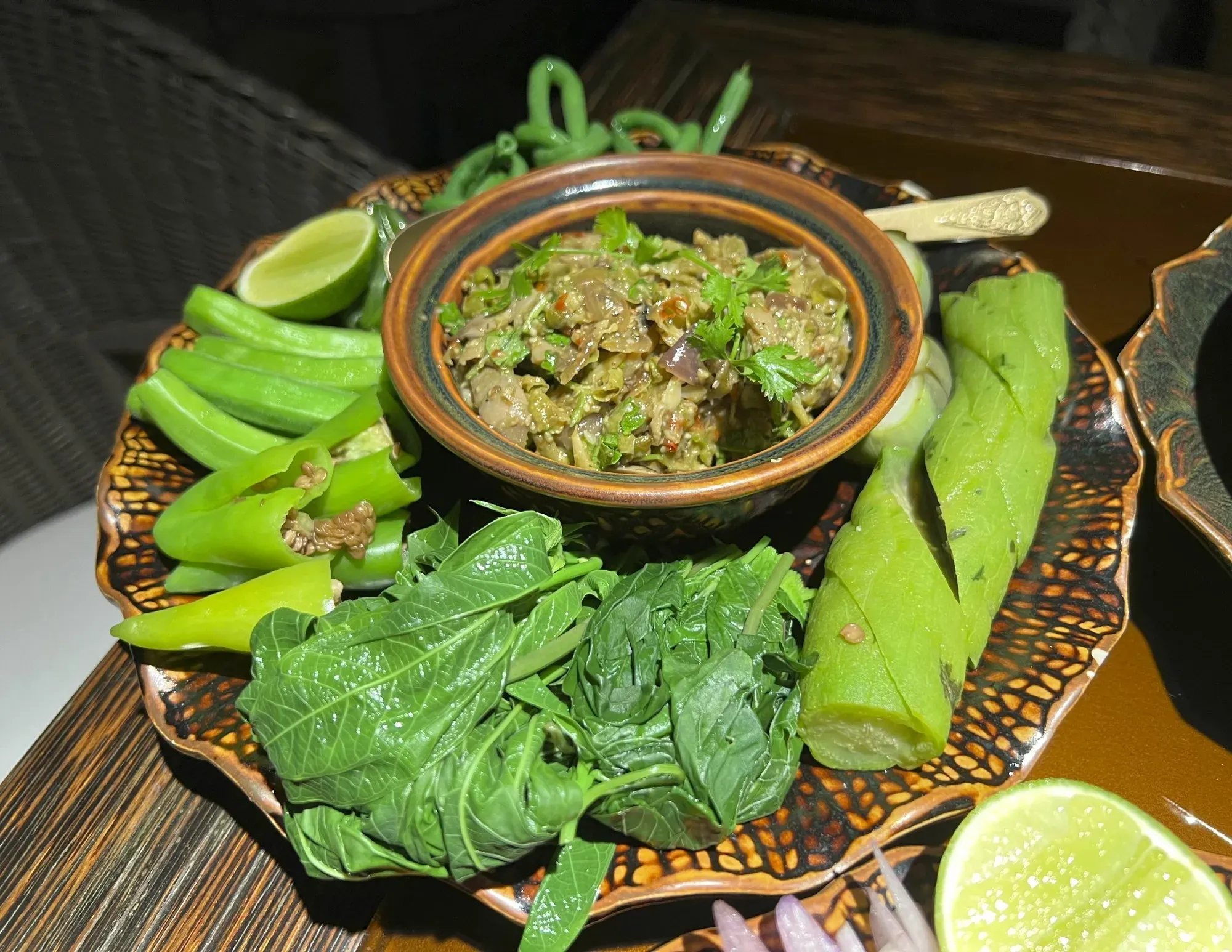
Trop Pgnon are small pea eggplants from Cambodia, and Bok refers to the style of smashed ingredients by mortar and pestle in Cambodian cuisine. Bok Trop Pgnon, therefore, is a pounded eggplant dip. The trop pgnon is grilled and smashed with garlic, shallots, chilies, sugar, and sometimes prahok to make the actual dip. It is a popular shared appetizer that is served alongside local, seasonal vegetables
Tek Kroeung
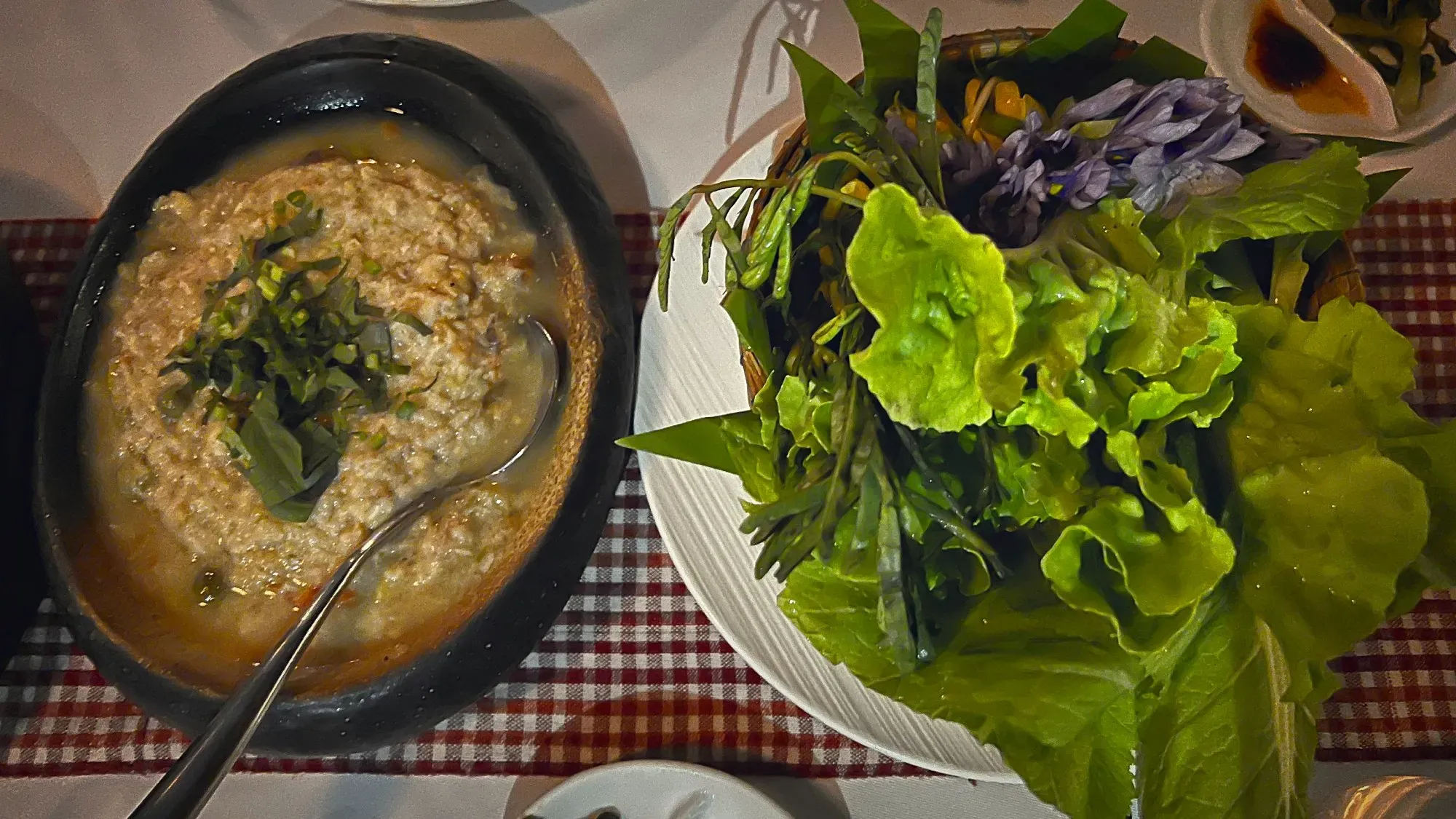
The kroeung blend of herbs and spices is combined with water (tek) to cook vegetables and often white fish into a scrumptious, soupy mess. It is usually served with local, seasonal vegetables and used as a dip in a similar fashion to Bok Trop Pgnon.
List of Other Things to Try:
- Saraman Beef (Special kroeung blend with coconut cream and peanuts that is cooked slowly for a long time to make a moist, tender beef curry)
- Pleah Sach Ko (Beef ceviche; similar to Laotian Laab)
- Bai Sach Chrouk (Garlic-marinated pork and rice)
- Yaohon / Yao Hon (Cambodian Hot Pot)
- Tarantula (Roasted insects are popular snacks/street food, the most iconic for a visitor in Cambodia is probably the tarantula)
Resources
Restaurant Recommendations
The restaurant scene in Phnom Penh was one of my favorite parts of Cambodia, apart from Angkor Wat of course. There are phenomenal gems that can be found (for an affordable rate) that are endeavoring to revitalize this beautiful cuisine and bring it into the international spotlight. Perhaps the most famous of these is Malis. Malis is Phnom Penh's premier Cambodian fine dining restaurant. It has received many awards for its service and menu. They make high-class versions of traditional dishes, as well as newer inventions from a celebrated, modern chef. Although it is extremely expensive by Cambodian standards, compared to prices in cities around the rest of the world, it is an affordable fine dining experience. On another note, the portions are plentiful. Malis is a splurge that is absolutely worth it.
Another fine dining restaurant that is also worth the relatively higher price is Kravanh. Kravanh makes classic Cambodian dishes with high-quality ingredients in a sustainable fashion. The restaurant was a leader in bringing Cambodian cuisine to an elevated fashion and helping to restore some of the cultural heritage that was almost lost in the 1970s. Located in a beautiful villa in Phnom Penh, the top-notch, classic dishes served here are worth a visit.
NESAT is also a highly recommended restaurant in Phnom Penh. NESAT Seafood House is a restaurant tucked away on a side street just off of the Russian Market that serves fresh seafood from Kampot. The ambiance is cozy, and the price is enticing. Most importantly, the seafood is fantastic.
To see an extensive list of restaurant recommendations in Cambodia, check out the Restaurants page to see a map of our top recommendations for Asia as well as the database with details on restaurants from all around the world.




